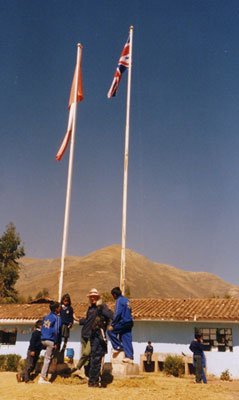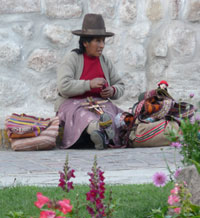Why Peru and UK
 Since the early days of emerging environmentalism back in the 1960s and 70s there has been a steady if inadequate development in formal and non formal education about protecting our natural world. Gradually as human impact on natural systems has been understood, observed and suffered our attitudes towards our own behaviour have slowly been changing.
Since the early days of emerging environmentalism back in the 1960s and 70s there has been a steady if inadequate development in formal and non formal education about protecting our natural world. Gradually as human impact on natural systems has been understood, observed and suffered our attitudes towards our own behaviour have slowly been changing.
A situation of gravity is one that faces us today and yet despite those four or five decades of growing awareness most nations around the world lack strategies to educate their people in sustainable ways. Those that have implemented programmes such as here in the UK with ‘Sustainable Schools 2020’ are still struggling with having a knowledgeable, experienced and passionate teaching staff to deliver what is needed.
The educational community continues to struggle to provide the necessarily experienced teachers in their institutions, unlike any other subject they are expected to deliver in their classrooms. Still there is a fundamental dependence on outside providers to fill the gaps. We must find the space in our work for the transfer of skills down to a teacher level as well as producing new teachers as comfortable with sustainability as they are with a PowerPoint as well as specialists to guide and coordinate at an institutional level.
Continued mixed messages do not help the process. As a global population we are encouraged to consume to maintain economic development, developing nations will require cheap energy to raise levels of living standards and still there is scepticism about what climate change in particular is really about.
One of our biggest challenges as developed nations, assuming we really follow and achieve the sustainability path, will be convincing developing nations to develop with sustainability as a key focus in their economies. Britain, like other rich nations, therefore has its work cut out not only in reaching ‘sustainable status’ itself, but also enabling poorer nations to educate and affect change on their shores. Peru is one such country, a poor nation with an aspiring population and abundant natural resources. Peru is one of the most ecologically diverse countries in the world, can demonstrate most of the world’s climate types, is host to the mighty Amazon, the high Andes and a desert coast that has been home for millennia of cultures who benefited from the rich biodiversity of the Pacific Ocean and its cold Humboldt Current.
Peru is one such country, a poor nation with an aspiring population and abundant natural resources. Peru is one of the most ecologically diverse countries in the world, can demonstrate most of the world’s climate types, is host to the mighty Amazon, the high Andes and a desert coast that has been home for millennia of cultures who benefited from the rich biodiversity of the Pacific Ocean and its cold Humboldt Current.
Peru can also ‘boast’ being 3rd most at risk from climate change – the tropical glaciers of the Andes will have disappeared by 2030, the Amazon rainforest is drying to savannah and El Niño is having more frequent and savage effects on the coastal and mountain communities.
The fact that the major conurbations are situated on the coast and derive their drinking water from those glaciers is a point that not many Peruvians have yet grasped. Whether Peruvians can truly have any impact upon their land and its contribution to global environmental systems is one matter, but not one that we should leave to chance.
There are many countries that educational communities can be collaborating with, but there must be few partnerships that could be as interesting and important as that between such a developed country as Great Britain and such an ecologically important country such as Peru.
If we can simultaneously achieve ‘sustainability’ in Great Britain and Peru then it should not be beyond the impossible to have similar collaboration in education throughout the world. Let us not forget that education for all in sustainability is crucial to the rest of sustainable development.

